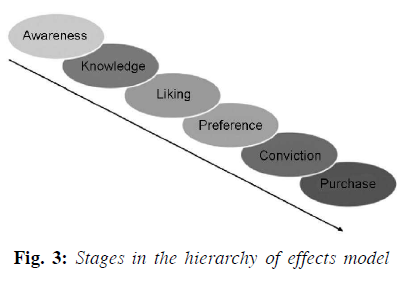PREVIOUS YEAR SOLVED PAPERS - November 2017
- A
The consumers who are primarily motivated by ideals are guided by knowledge and principles.


- B
The consumers who are motivated by achievement look for knowledge and principles.


- C
The consumers who are motivated by self expression don’t desire social or physical activity, variety, and risk.


- D
The consumers who are motivated by achievement desire social or physical activity, variety, and risk.


- Option : A
- Explanation : In the United States, lifestyle research has
been dominated since 1978 by the VALS
system, originally developed by SRI
International and now owned and operated by
SRI Consulting Business Intelligence (SRIBI).
In 1989 VALS was revised to maximize
its ability to predict consumer behaviour. The
original system grouped consumers based on
their attitudes toward social values such as
military spending and abortion rights. Research
conducted by SRI, Stanford University, and
the University of California, Berkeley, found
that psychological characteristics with several
key demographics were better predictors of
consumer behaviour than social values were.
The new VALS system, called VALS 2 for a
short time but now known again as VALS, has
psychology at its core and is therefore known
as a psychographic segmentation system.
VALS systems for Japan and the United
Kingdom have also been developed using the
same methodology. The U.S. VALS system
places U.S. adult consumers into one of eight
segments. The two main dimensions of the
framework are primary motivation (the
horizontal dimension) and resources (the
vertical dimension).
The SRI premise is that consumers are inspired by one of three primary motivations: ideals, achievements, and self-expression. Consumers who are primarily motivated by ideals are guided by knowledge and principles. Consumers who are primarily motivated by achievement look for products and services that demonstrate success to their peers. Consumers who are primarily motivated by self-expression desire social or physical activity, variety and risk.
- Option : B
- Explanation : Creative strategies, how marketers translate their messages into a specific communication, can be classified as either informational appeal or transformational appeal. An informational appeal elaborates on attributes or benefits. Examples in advertising are problem-solution ads (Excedrin stops headache pain quickly), product demonstration ads (Thompson Water Seal can withstand intense rain, snow, and heat), product comparison ads (Verizon offers better Internet access than Comcast), and testimonials from unknown or celebrity endorsers (basketball star LeBron James pitching Coca-Cola and Nike). Such appeals assume the consumer is processing the communication very rationally.
A transformational appeal elaborates on a non-product-related benefit or image. It might depict what kind of person uses a brand (as when VW advertised to active, youthful people with its “Drivers Wanted” campaign) or what kind of experience results from using the brand (Coast soap has been advertised as “The Eye Opener!”). Transformational appeals often attempt to stir up emotions that will motivate purchase. Many communicators use negative appeals such as fear, guilt, and shame to prompt action (get people to brush their teeth or stop smoking). Also, communicators can use positive emotional appeals such as humour, love, pride, and joy, sometimes employing “borrowed interest” devices such as frisky puppies or sex appeal to attract interest and raise involvement in the ad. The challenge here is to avoid detracting from comprehension and overshadowing the product.
29. Match the items of List-I with the items of List-II and denote the code of correct matching:
| List-I | List-II |
| (a) Basic Product | (i) Set of attributes and conditions buyers normally expect |
| (b) Expected Product | (ii) Possible augmentation and transformation the product might undergo in future |
| (c) Augmented Product | (iii) Exceed customer expectations |
| (d) Potential Product | (iv) Converting core benefits into product |
CODES
| (a) | (b) | (c) | (d) | |
| 1 | (iii) | (iv) | (i) | (ii) |
| 2 | (i) | (iii) | (iv) | (ii) |
| 3 | (i) | (iv) | (iii) | (ii) |
| 4 | (iv) | (i) | (iii) | (ii) |
30. Which of the following statements is false?
- Option : B
- Explanation : Fixed capital refers to investment in longterm assets. Management of fixed capital involves around allocation of firm’s capital to different projects or assets with long-term implications for the business.
These decisions are called investment decisions or capital budgeting decisions and affect the growth, profitability and risk of the business in the long run.
The management of fixed capital or investment or capital budgeting decisions are important for the following reasons:
(i) Long-term growth and effects: These decisions have bearing on the long-term growth. The funds invested in long-term assets are likely to yield returns in the future. These affect future possibilities and prospects of the business.
(ii) Large amount of funds involved: These decisions result in a substantial portion of capital funds being blocked in long-term projects. Therefore, these investment programmes are planned after a detailed analysis is undertaken. This may involve decisions like where to procure funds from and at what rate of interest.
(iii) Risk involved: Fixed capital involves investment of huge amounts. It affects the returns of the firm as a whole in the longterm. Therefore, investment decisions involving fixed capital influence the overall business risk complexion of the firm.
(iv) Irreversible decisions: These decisions once taken, are not reversible without incurring heavy losses. Abandoning a project after heavy investment is made is quite costly in terms of waste of funds. Therefore, these decisions should be taken only after carefully evaluating each detail or else the adverse financial consequences may be very heavy.

